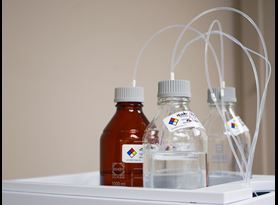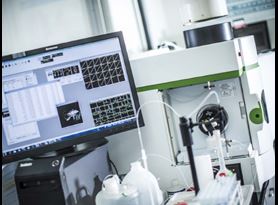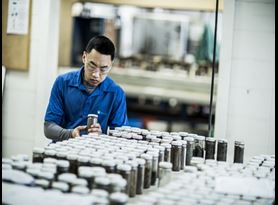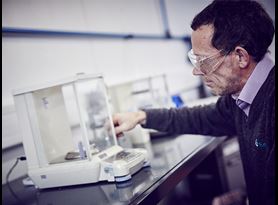Volatile organic compounds in air by thermal desorption
During an environmental assessment process, and to confirm a “clean bill of health” on a property, soil, water, and vapor must be assessed. Without vapor testing, an environmental assessment is considered incomplete.
Detection of volatile organic compounds in air
There are two methods with which a consultant can assess vapor/air:
Basic - Calculated method
The first is the “calculated method” meaning that the consultant applies a math formula provided by the Ministry of Environment to the soil and/or water concentrations. The result is a very conservative estimate of potential vapor concentrations. This method is ideal if you have a small budget or have very basic hydrocarbon contaminants, but the calculated result has little to no comparison to actual vapor results.
Preferred - Vapor probe and thermal desorption
The second method is to install a vapor probe or establish a breathing space location and physically collect a vapor sample. This vapor sample can undergo thermal desorption to assess volatile organic compounds (VOCs). While slightly more expensive, this is the preferred method for vapor analyses because the laboratory then provides a definitive concentration that can be directly compared to the numerical Contaminate Site Regulation (CSR) standard. This method is quickly becoming accepted in the environmental consulting industry as a standard practice.
Volatile organic compounds in air by thermal desorption is a testing method which determines the quantity of VOCs in air or soil vapor when sampled and collected in suitable thermal desorption tubes. This testing method was originally developed to work with the British Columbia Contaminated Sites Regulation (BC CSR), but it has applications under other regulations and jurisdictions including the US EPA Method 325.
How does volatile organic compound detection work?
Step 1: Ambient air or soil gas samples are collected by introducing air into a multi-bed thermal desorption (TD) tube using a calibrated sampling pump. Samples are collected at a fixed pump flow rate (i.e., 50 mL/min) for a pre-determined duration.
Step 2: Once returned to the lab, thermal desorption tubes are heated to desorb the target analytes which are then trapped on cooled sorbent packed trap.
Step 3: Once the gas chromatograph (GC) is at the appropriate temperatures and pressures, the trap is rapidly heated to desorb the target analytes onto this analytical column.
Step 4: Analytes are separated by a capillary column and detected by mass spectrometry detector (MS) and flame ionization detector (FID).
Results can be reported in either μg/sample or μg/m3 units for easy cross-referencing with the BC CSR enabling fast and confident identification of guideline exceedances. Several analyte packages are available ranging from a comprehensive analyte suite to site-specific potential contaminant of concern (PCOC) analyte groups.
The results can be used to ensure that VOCs do not exceed the regulated limits designed to protect our families, our environment, and our workers.
Our Equipment
The Element laboratory in Surrey, BC is outfitted with high-end, state-of-the-art equipment to produce the highest quality data. The use of thermal desorption instead of solvent desorption allows the collected compounds to be transferred directly to the Gas Chromatograph Mass Spectrometer (GCMS) with little or no dilution, thereby increasing the sensitivity of the analysis. We also have the capability of recollecting sample after analysis to allow for repeated analysis or dilutions.
Why you need to test for VOCs
According to the Ministry of Environment and Climate Change Strategy of British Columbia, “it is the responsibility of the site owner or operator to retain a qualified professional with demonstrable experience, as required by Section 63 of the Contaminated Sites Regulation to ensure that vapor is properly characterized and, if necessary, remediated in accordance with Ministry protocols, procedures, and guidance.” Read the full document here.
For more information about our VOC testing services, or to speak with one of our experts, contact us today.
Find related Resources
More from Element

VOC and SVOC Testing
We perform VOC and SVOC testing to ensure that your products are compliant to all applicable health and safety standards.

Gas Chromatography Mass Spectroscopy
GC/MS is a combination of two advanced analytical techniques which allow for the identification and precise quantification of volatile and semi-volatile compounds for liquid, gaseous and solid samples.

Soil Testing & Analysis
Whether you're working in clay, silt, sand, gravel, peat, or loam, understanding the soil properties of your site help you make good construction decisions.

Chemical Analysis
Find out how Element's chemistry teams work with our customers to identify the contents, composition and quality of materials they develop and manufacture.

